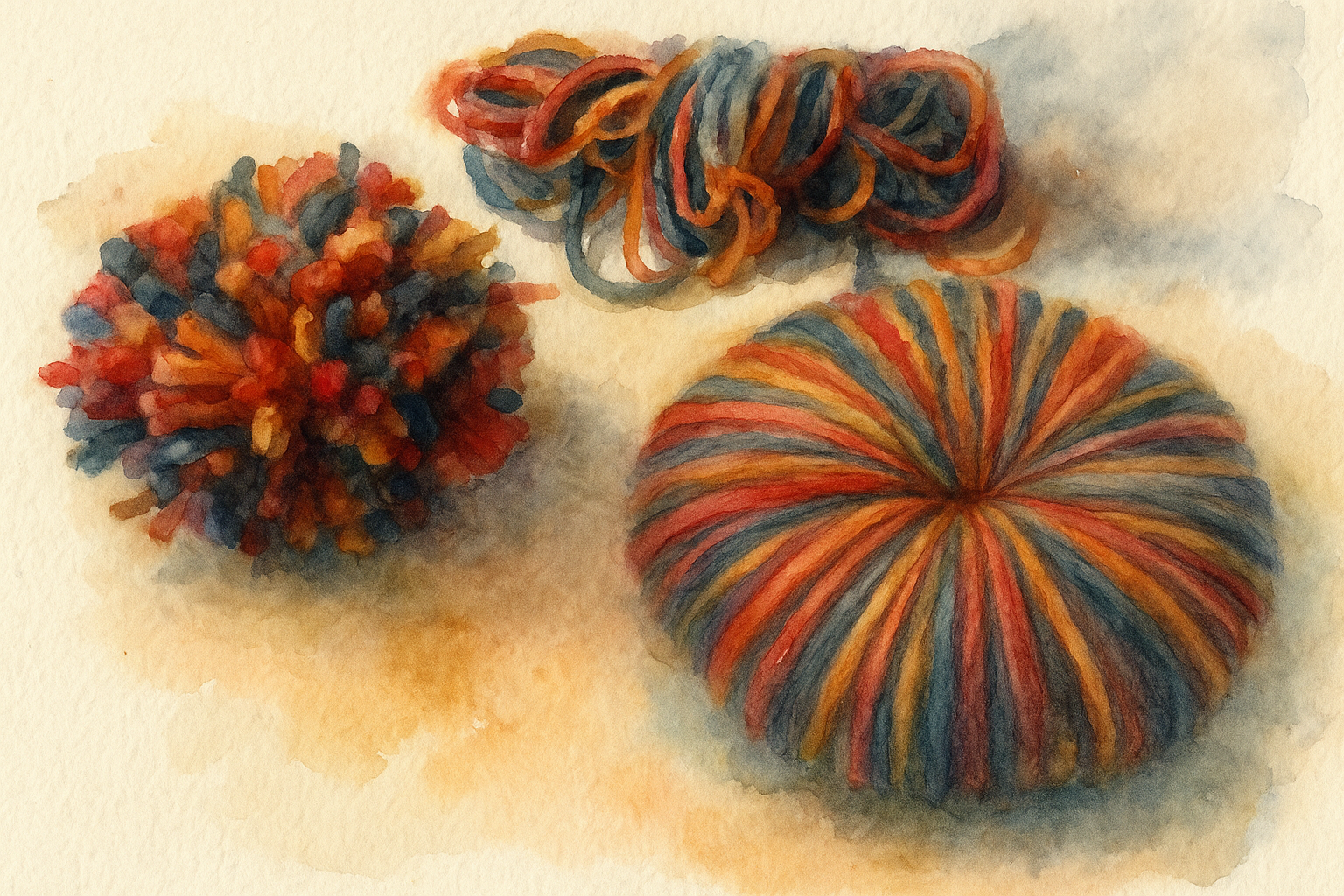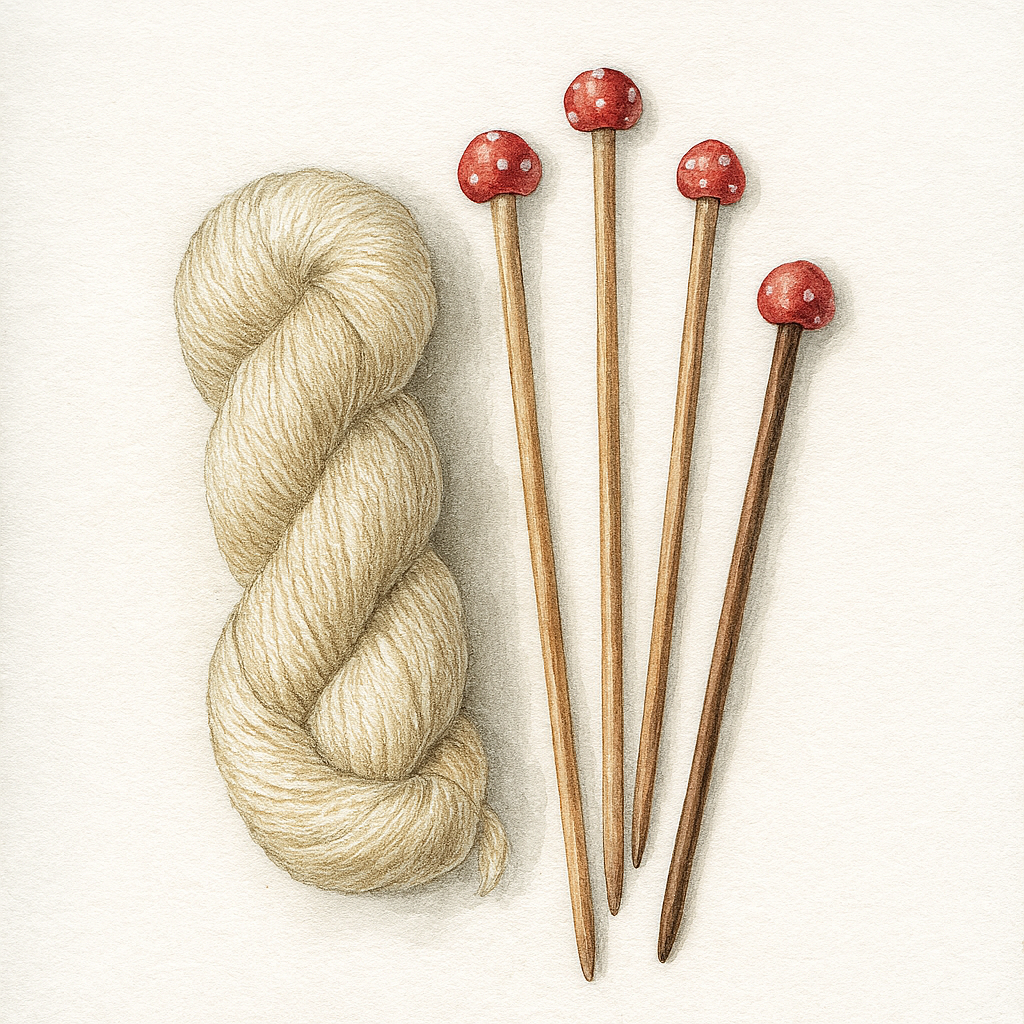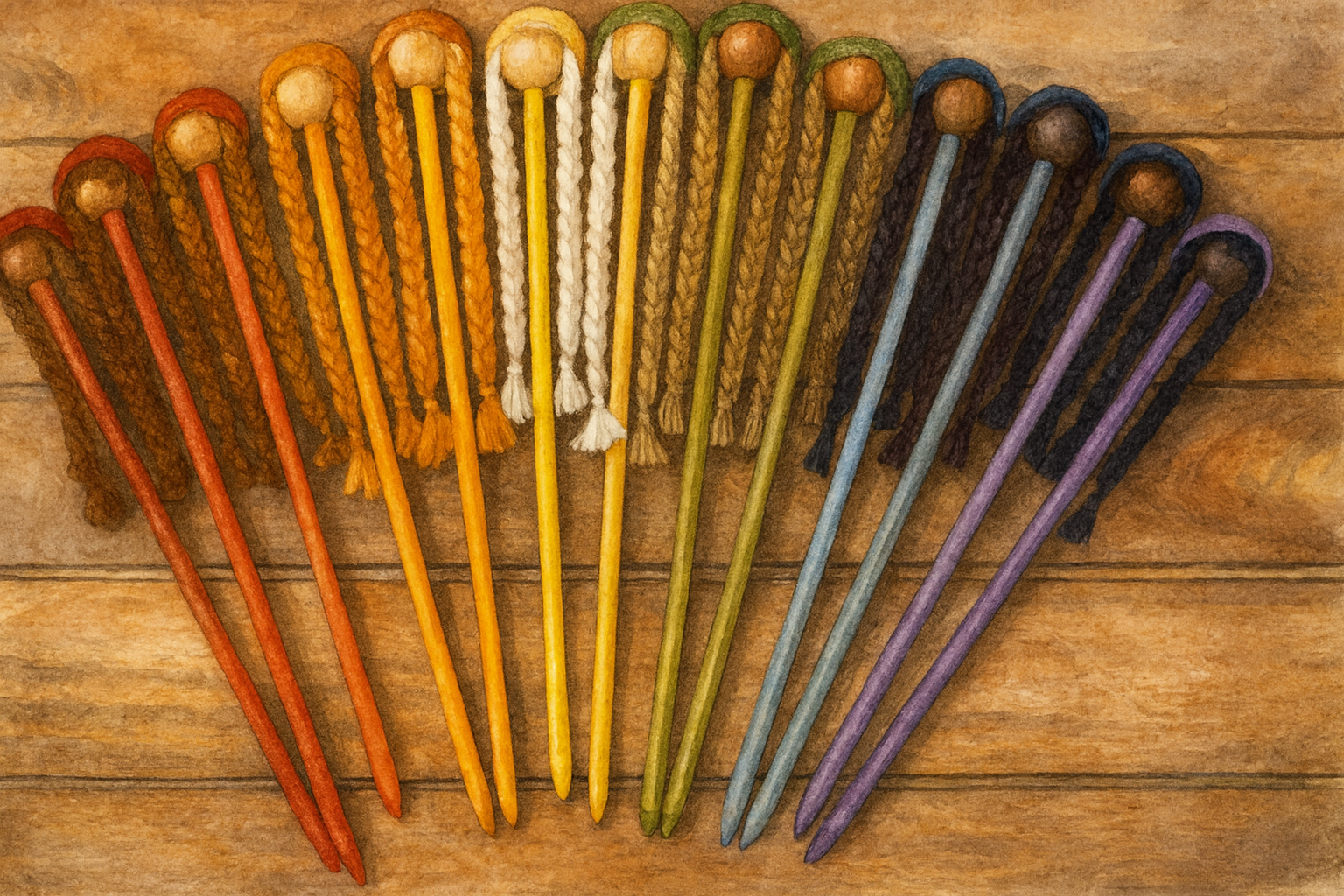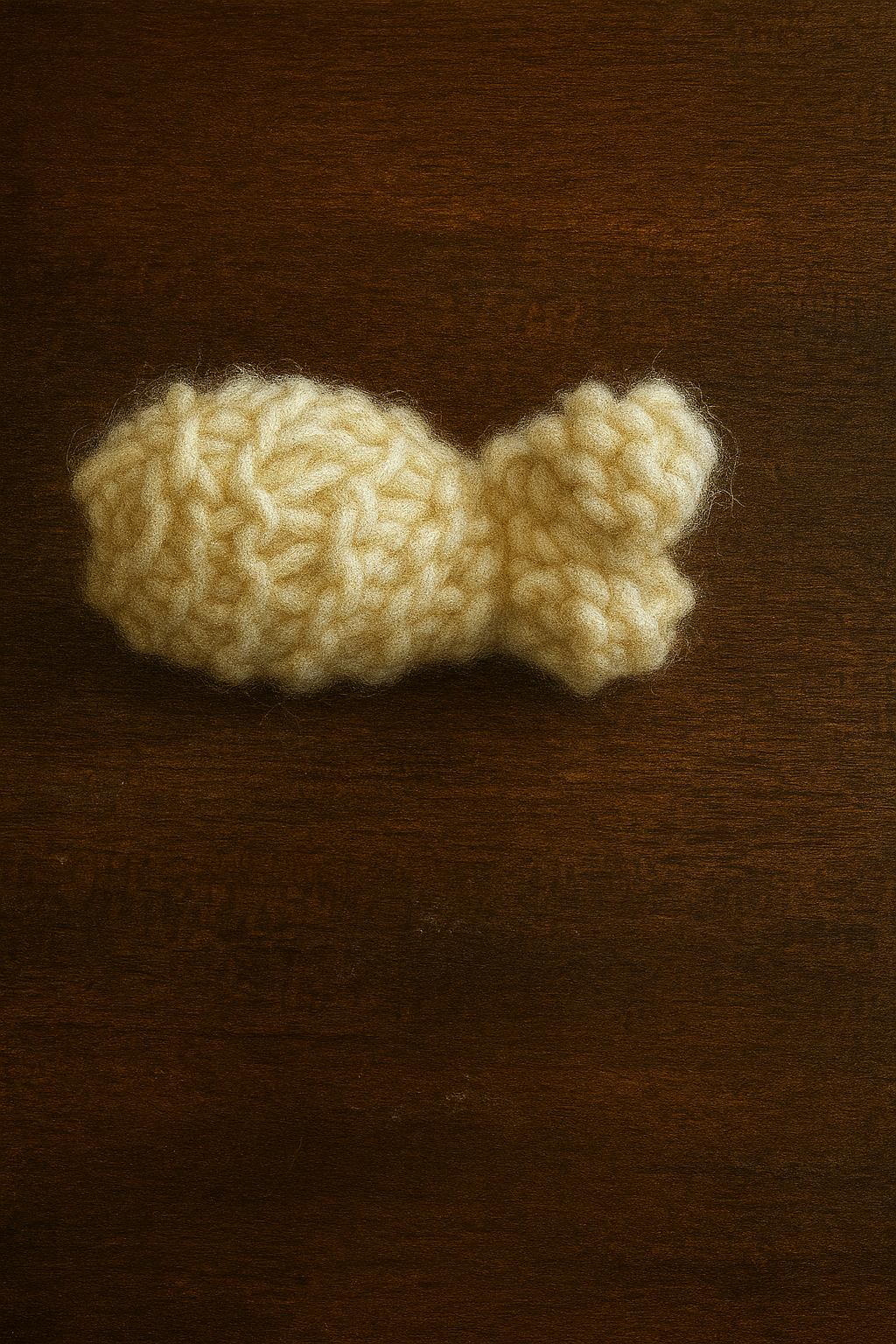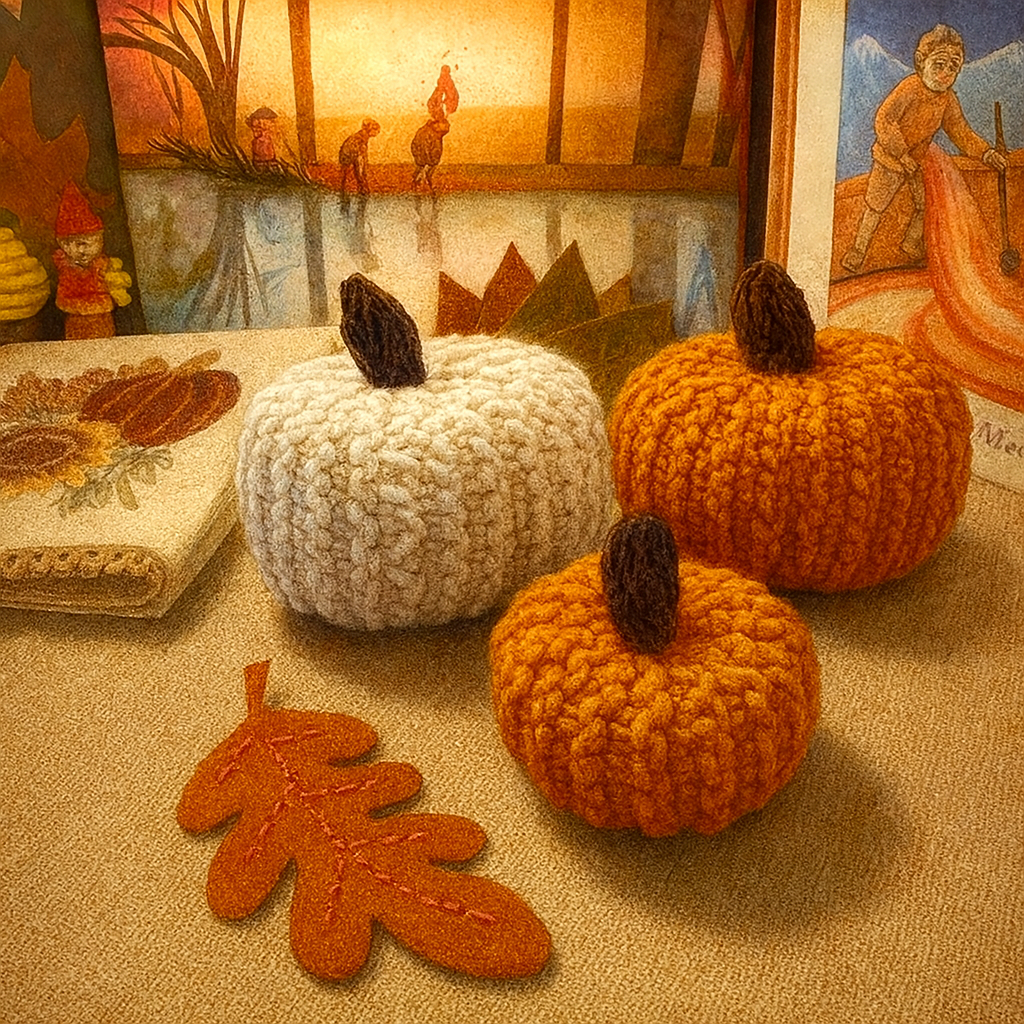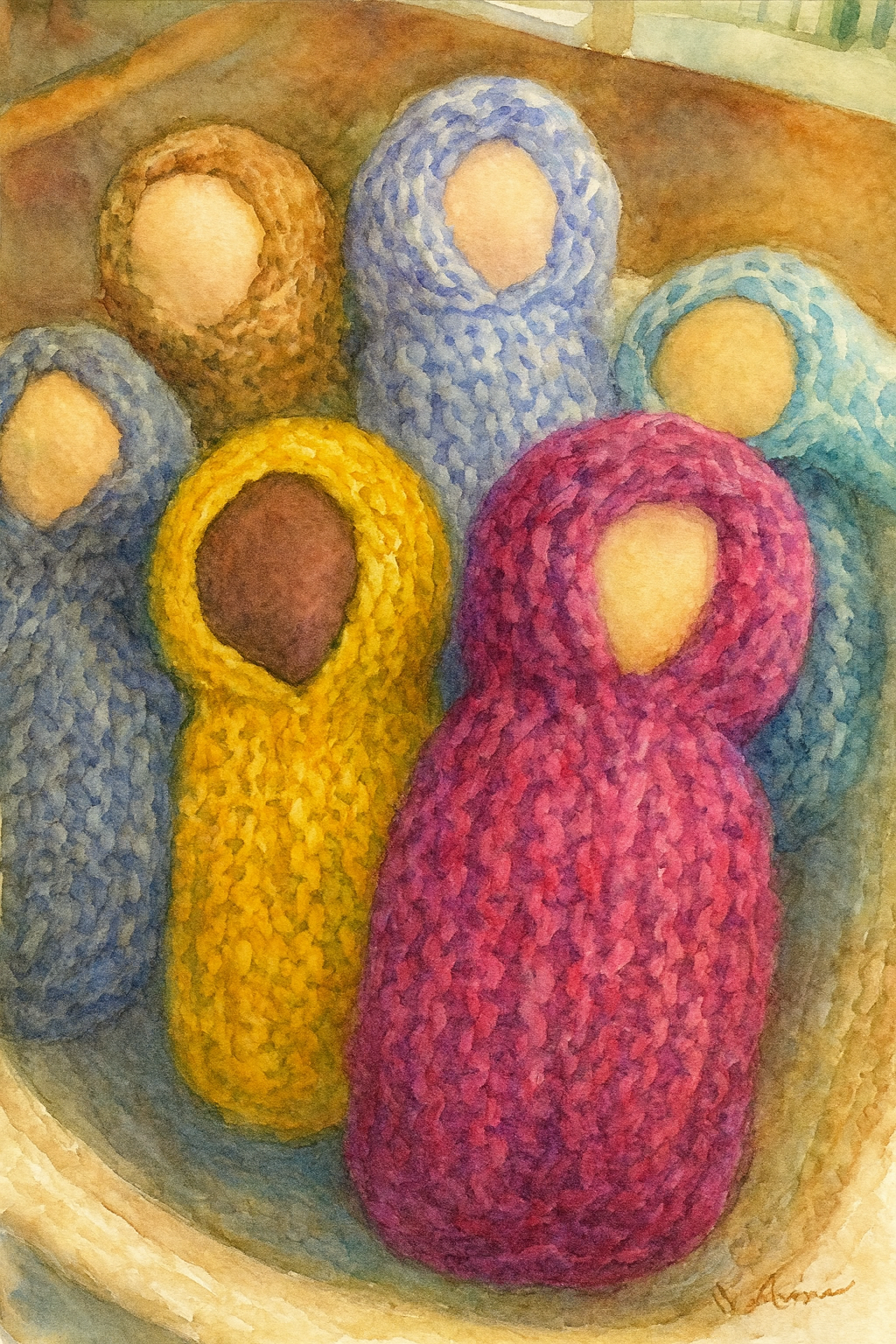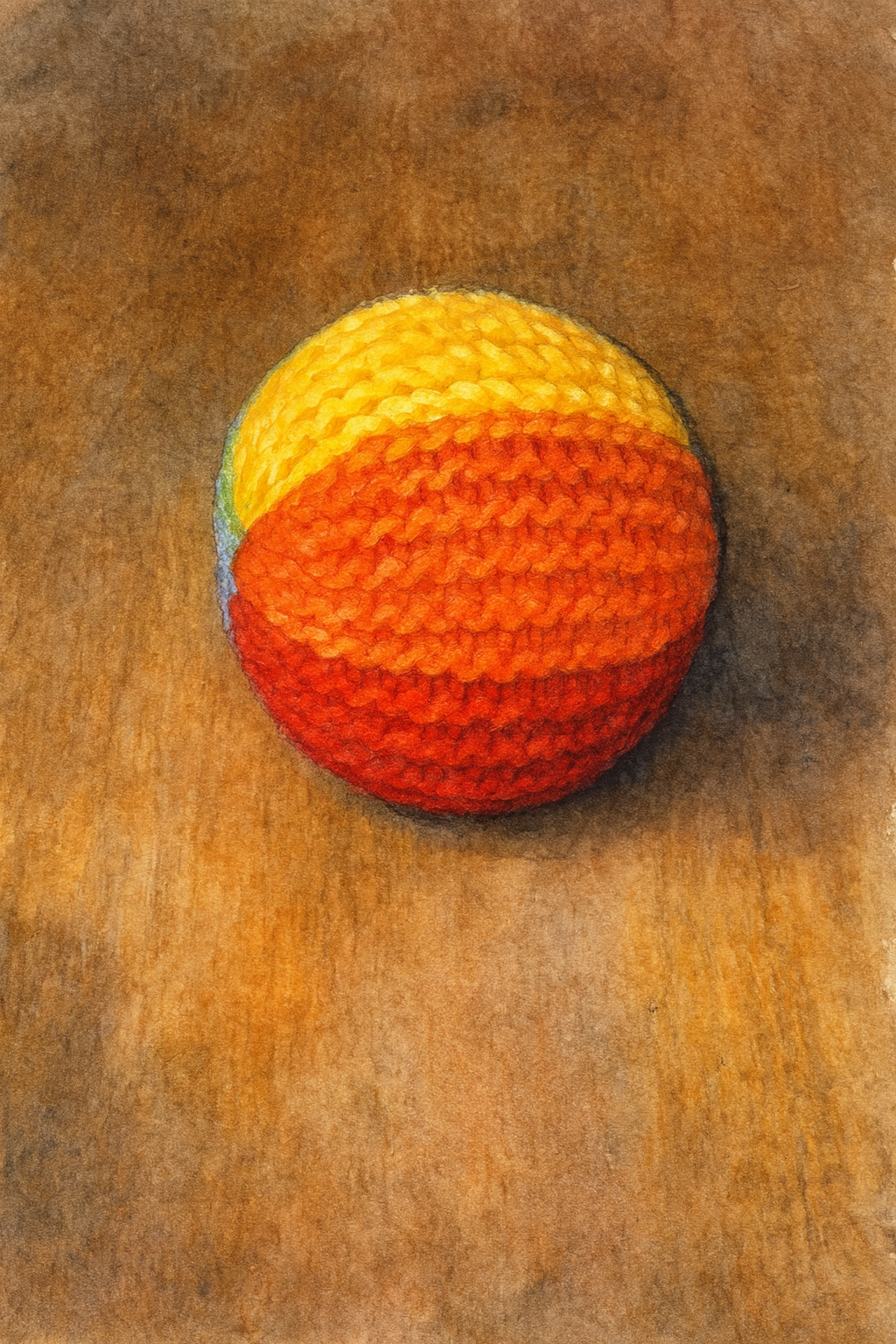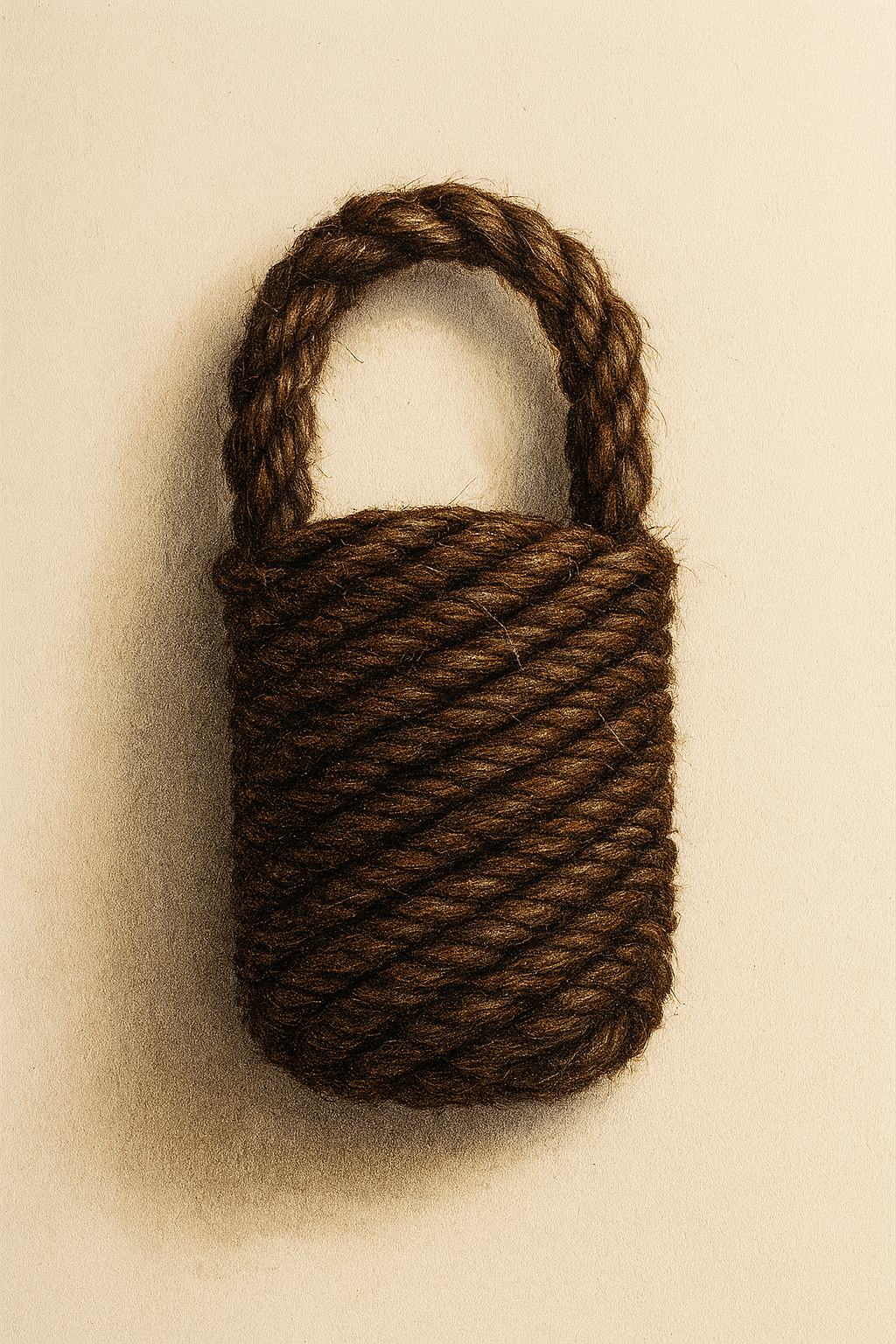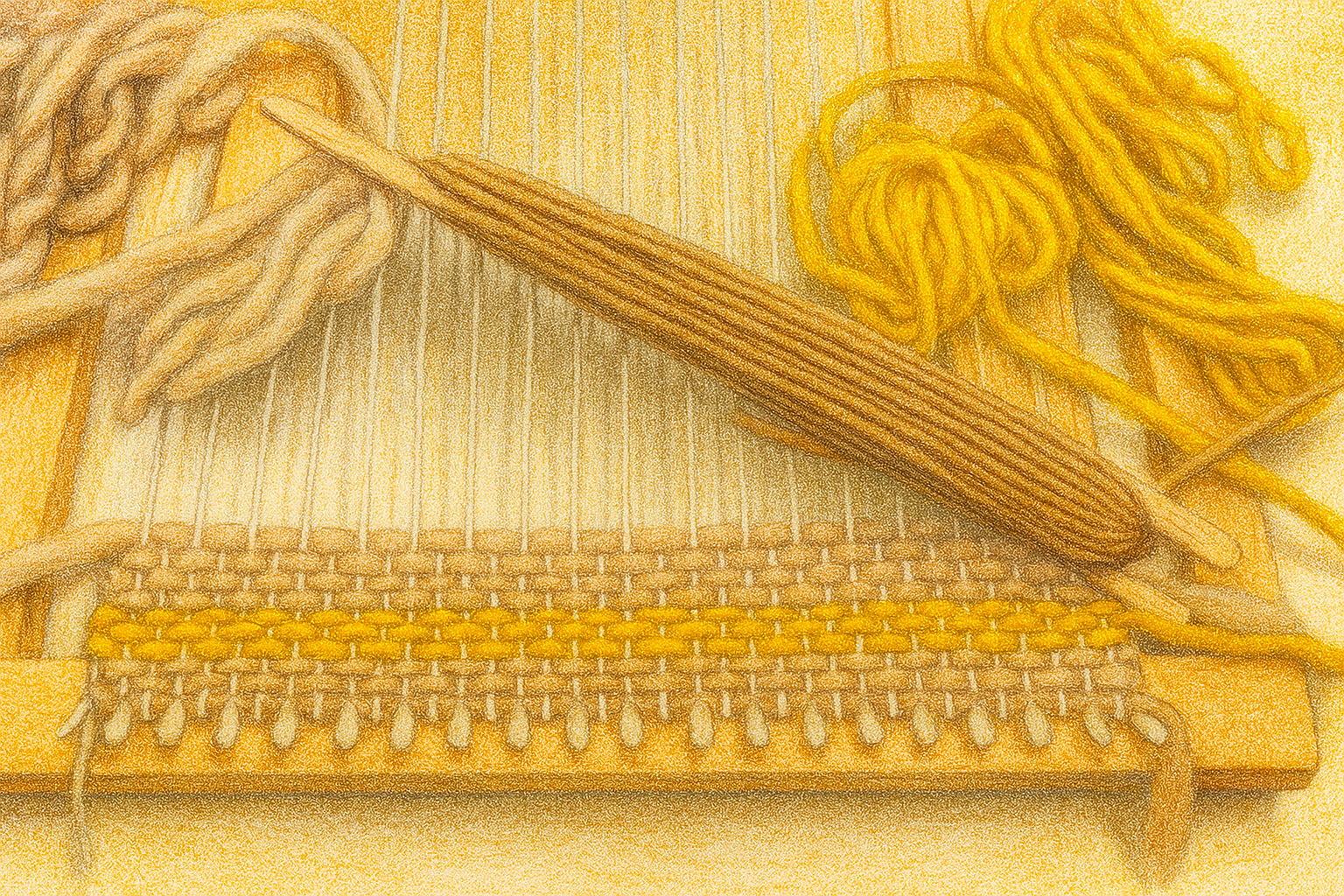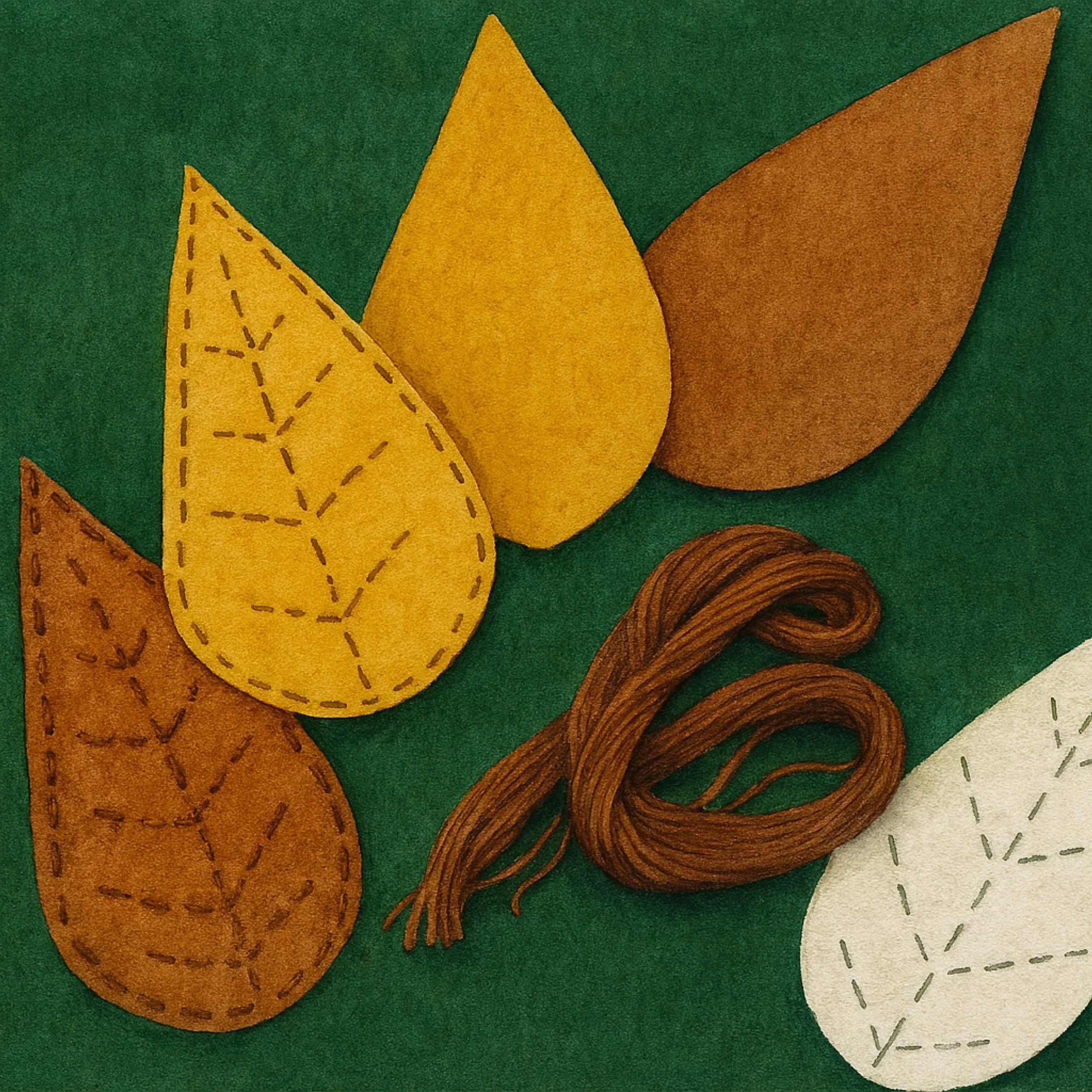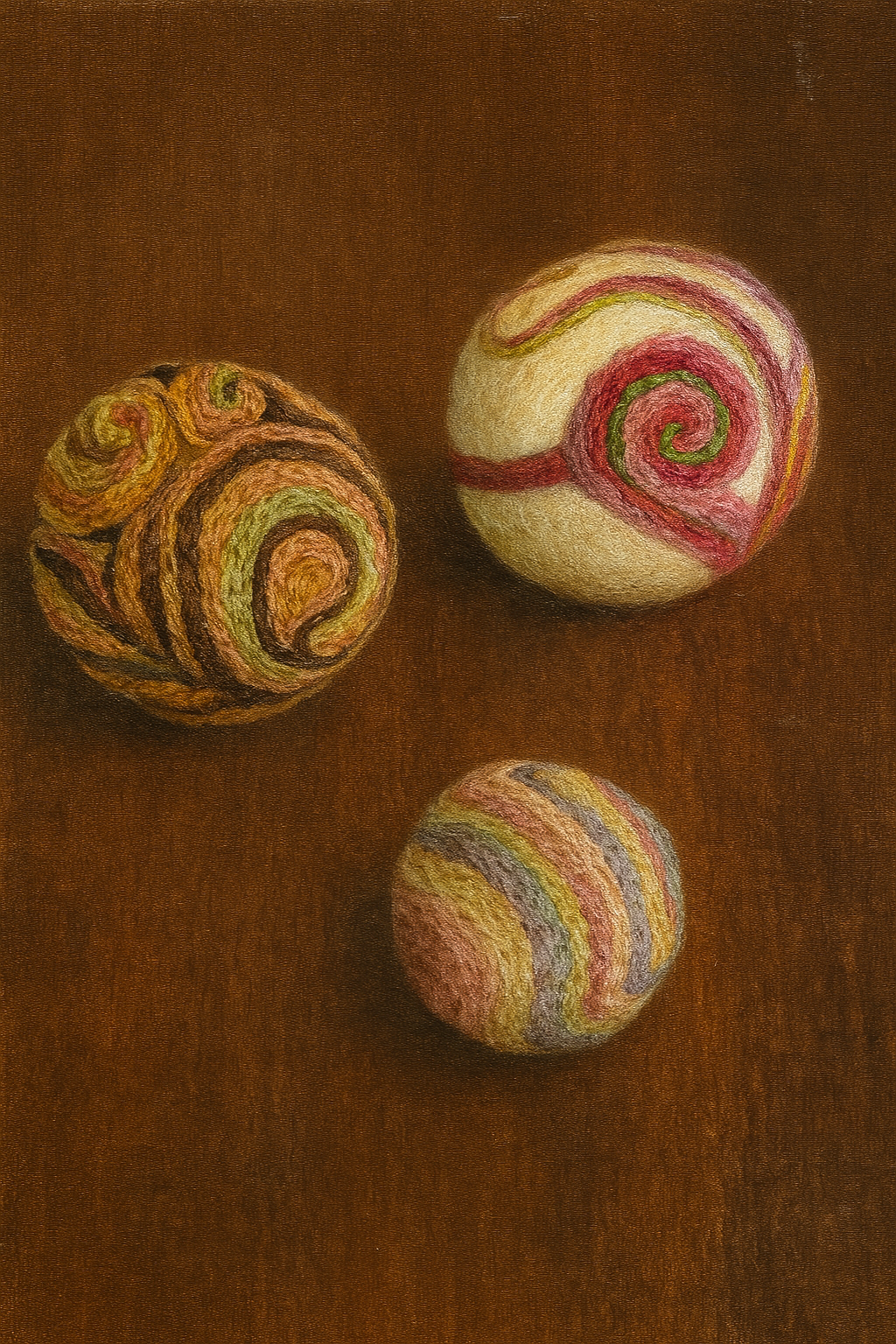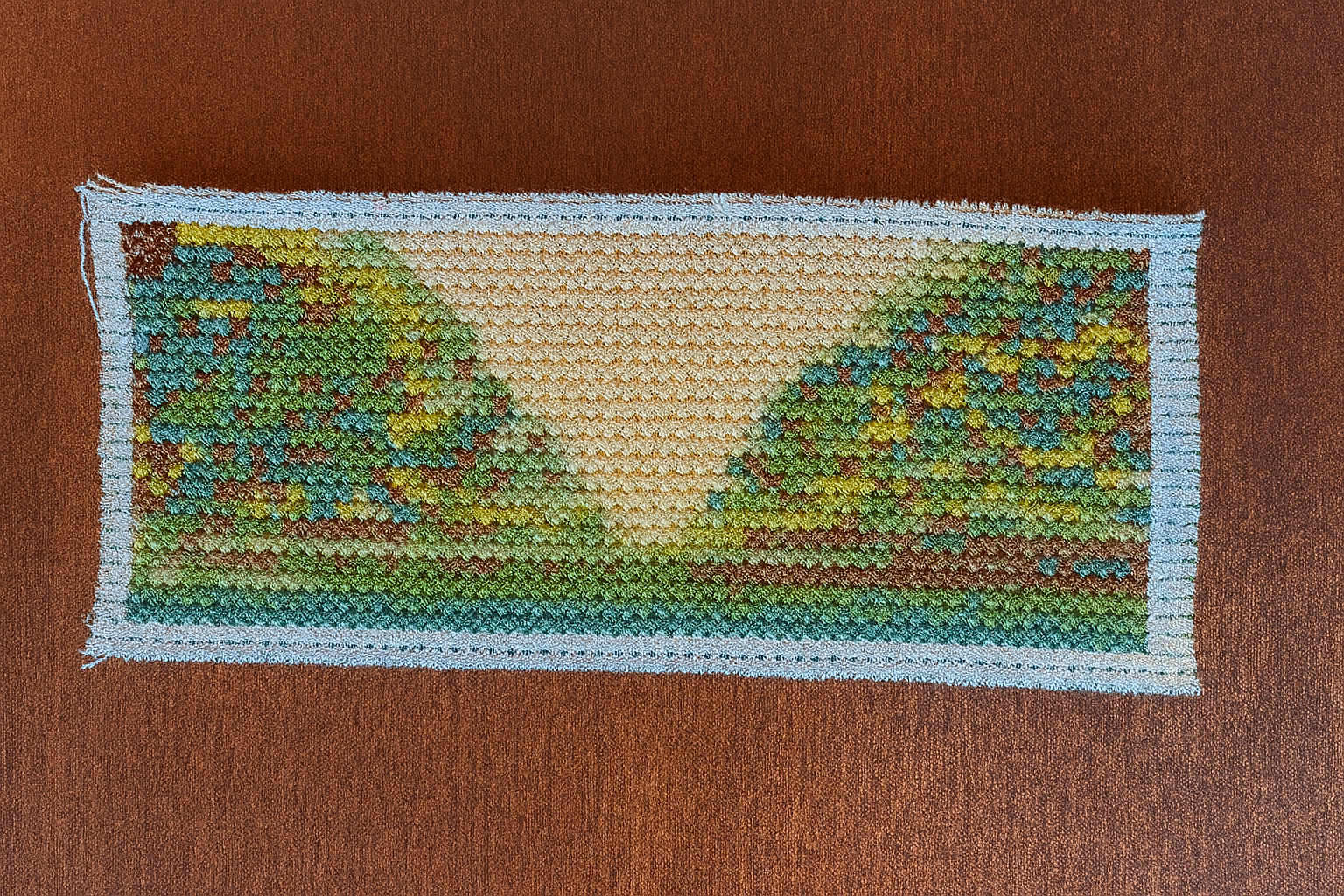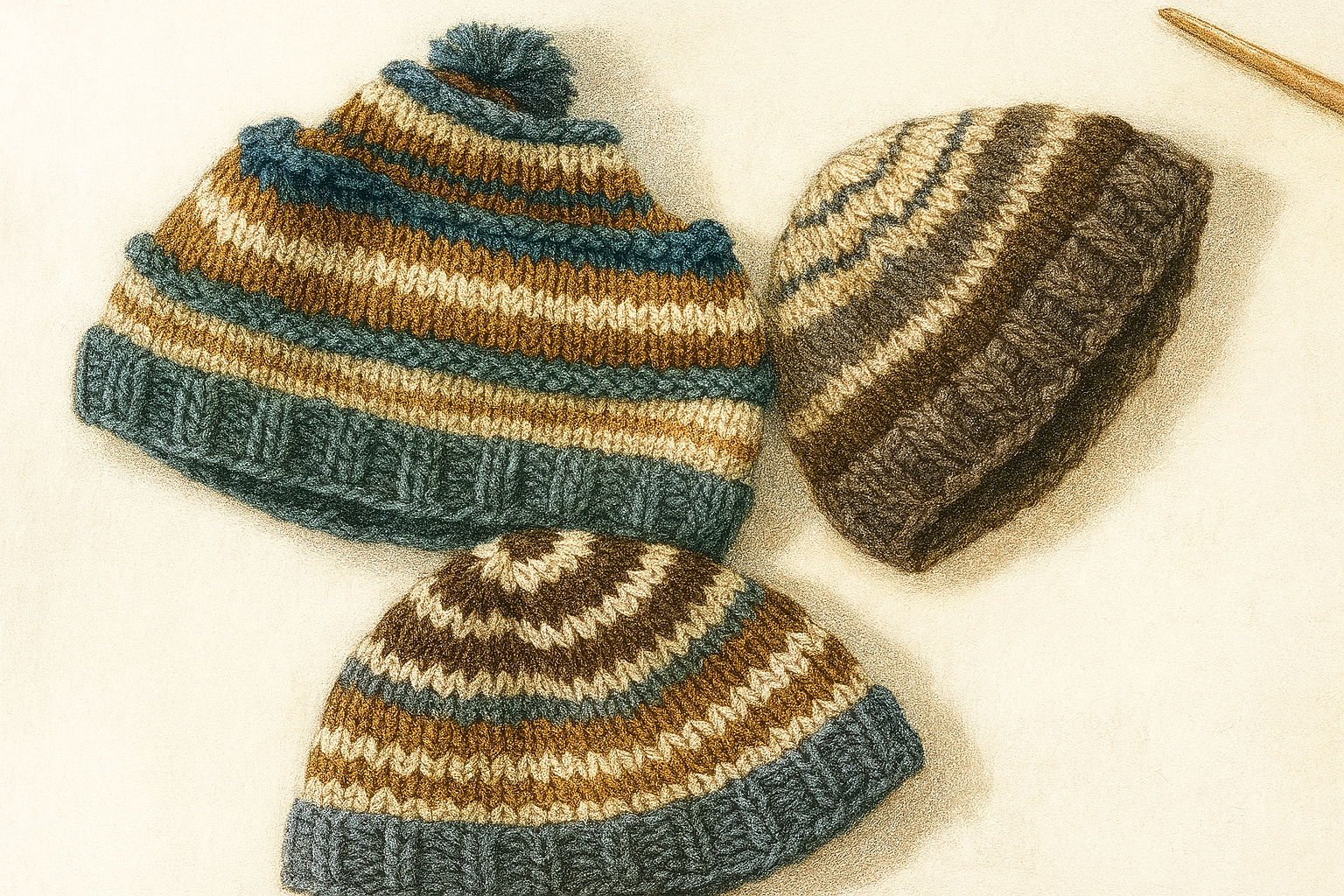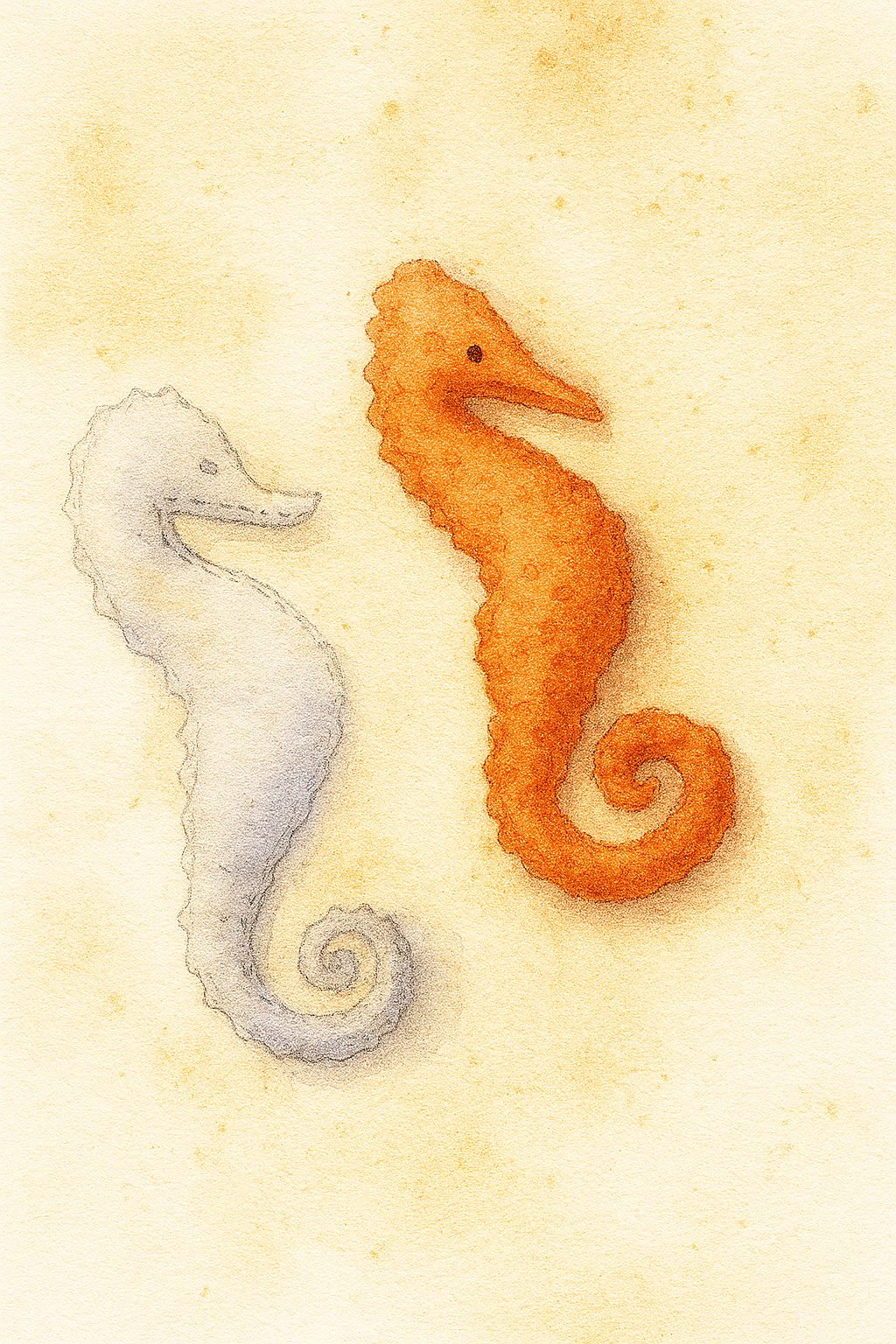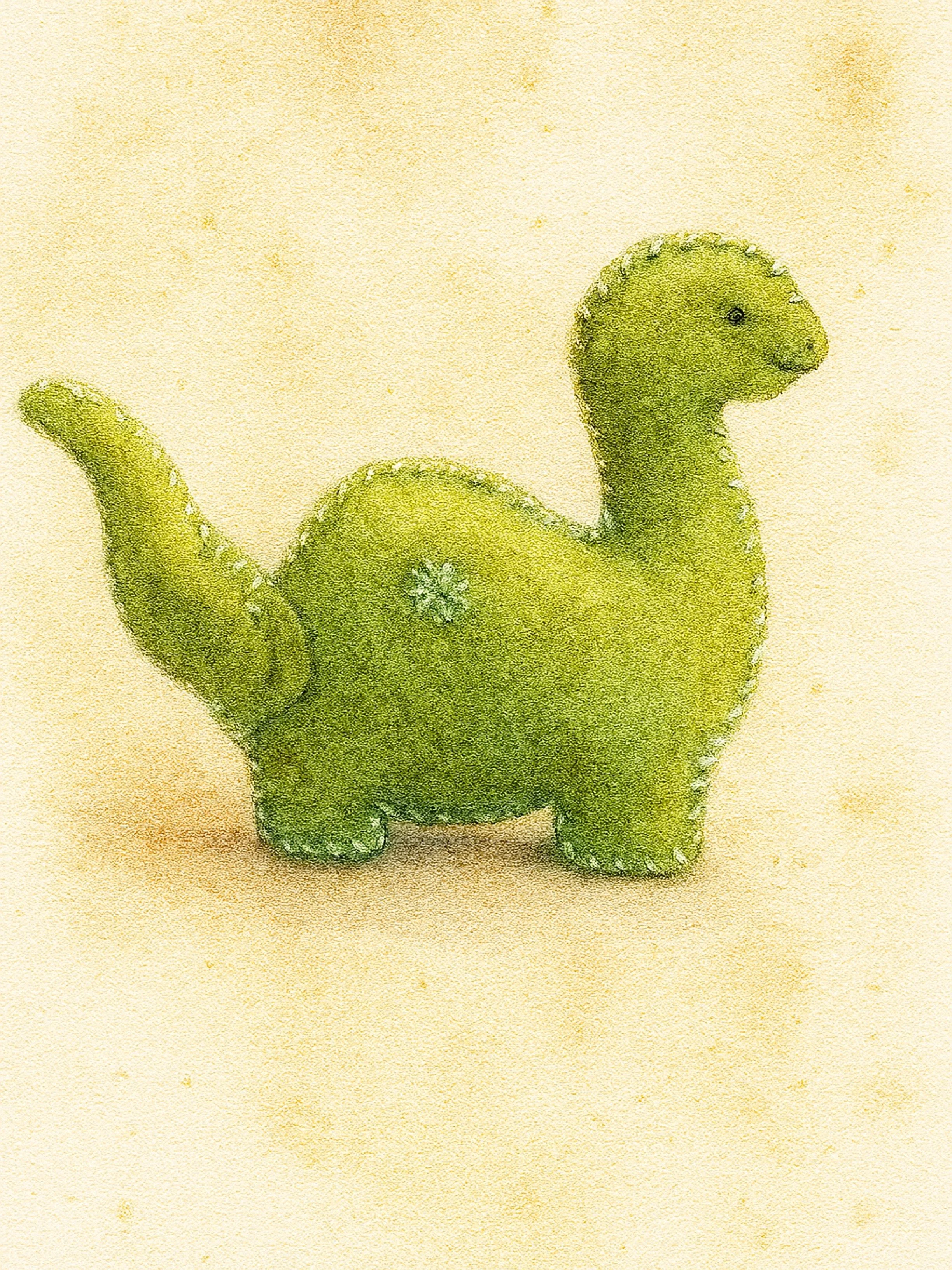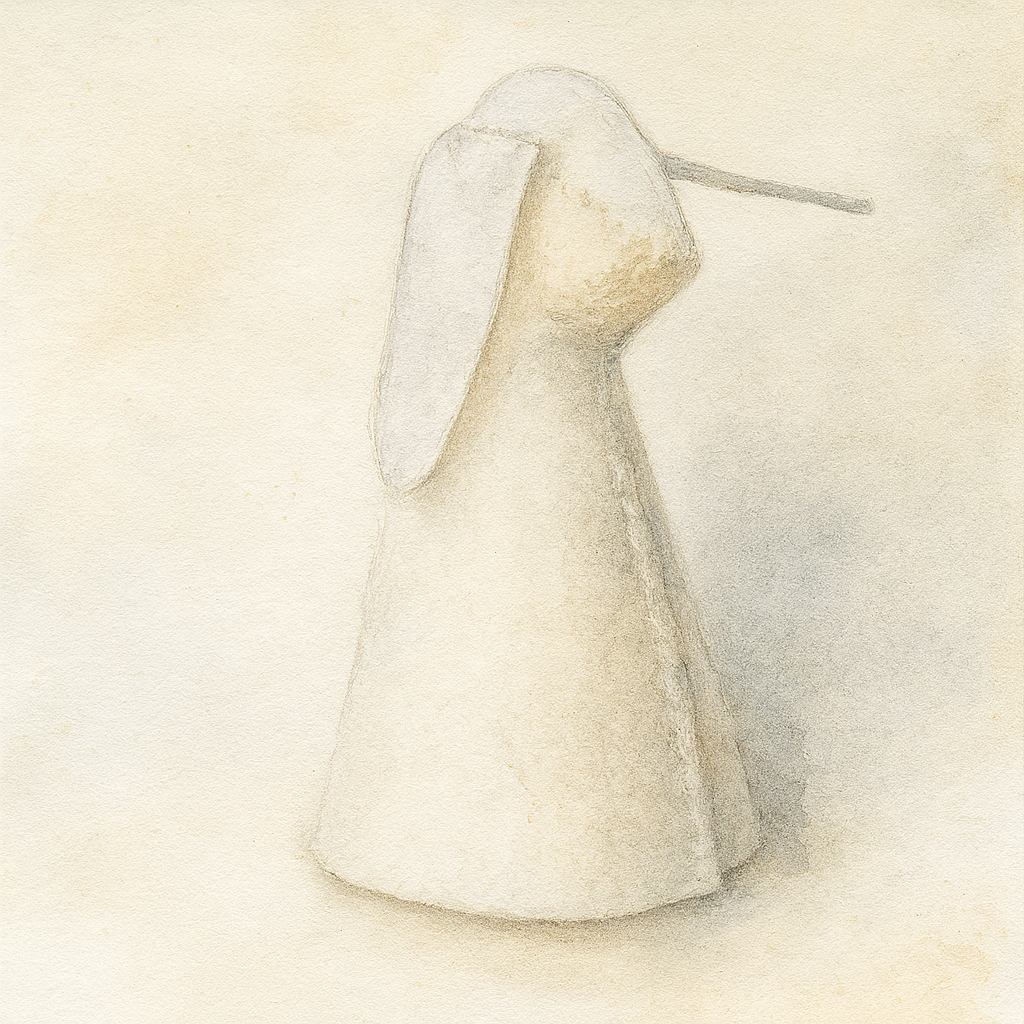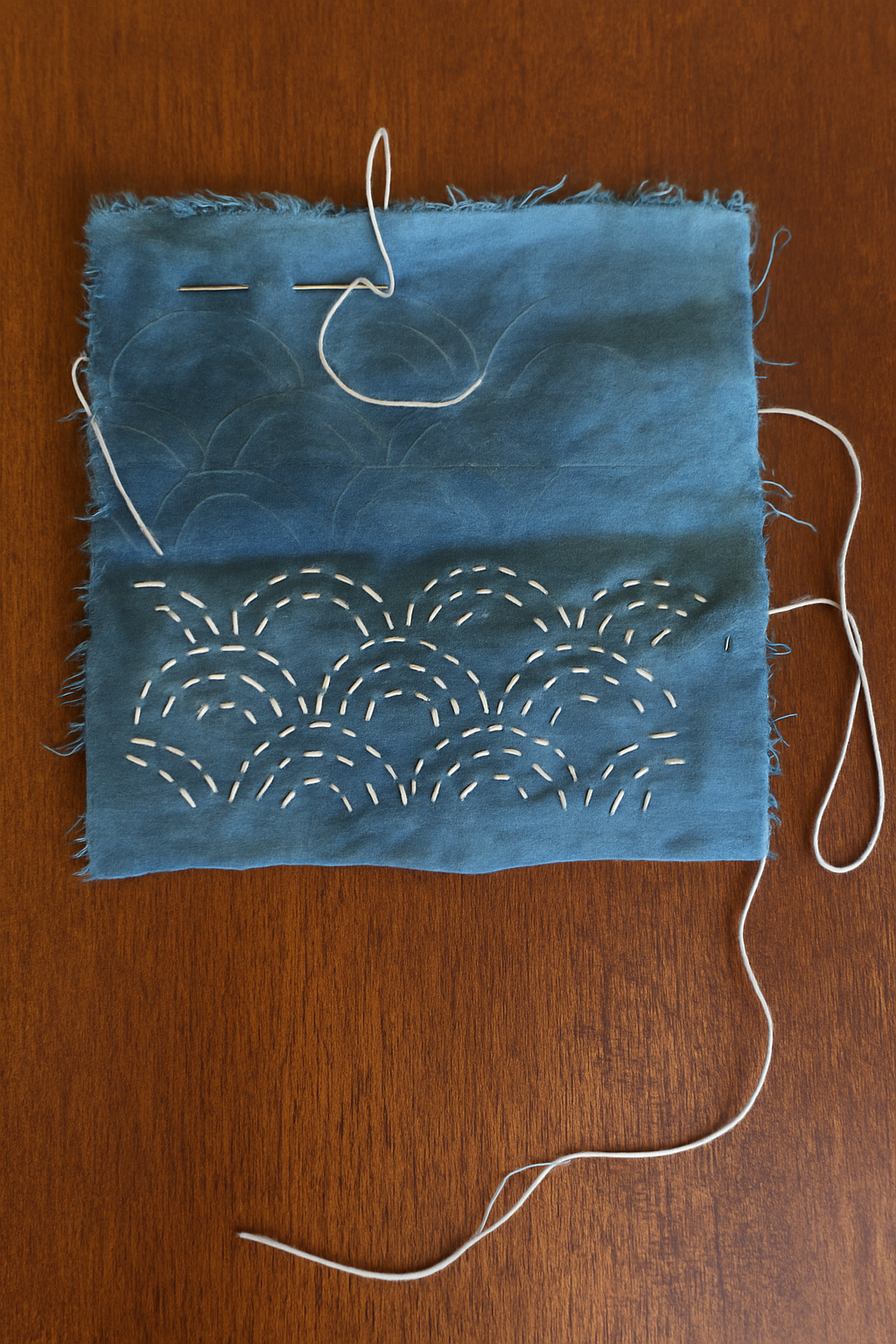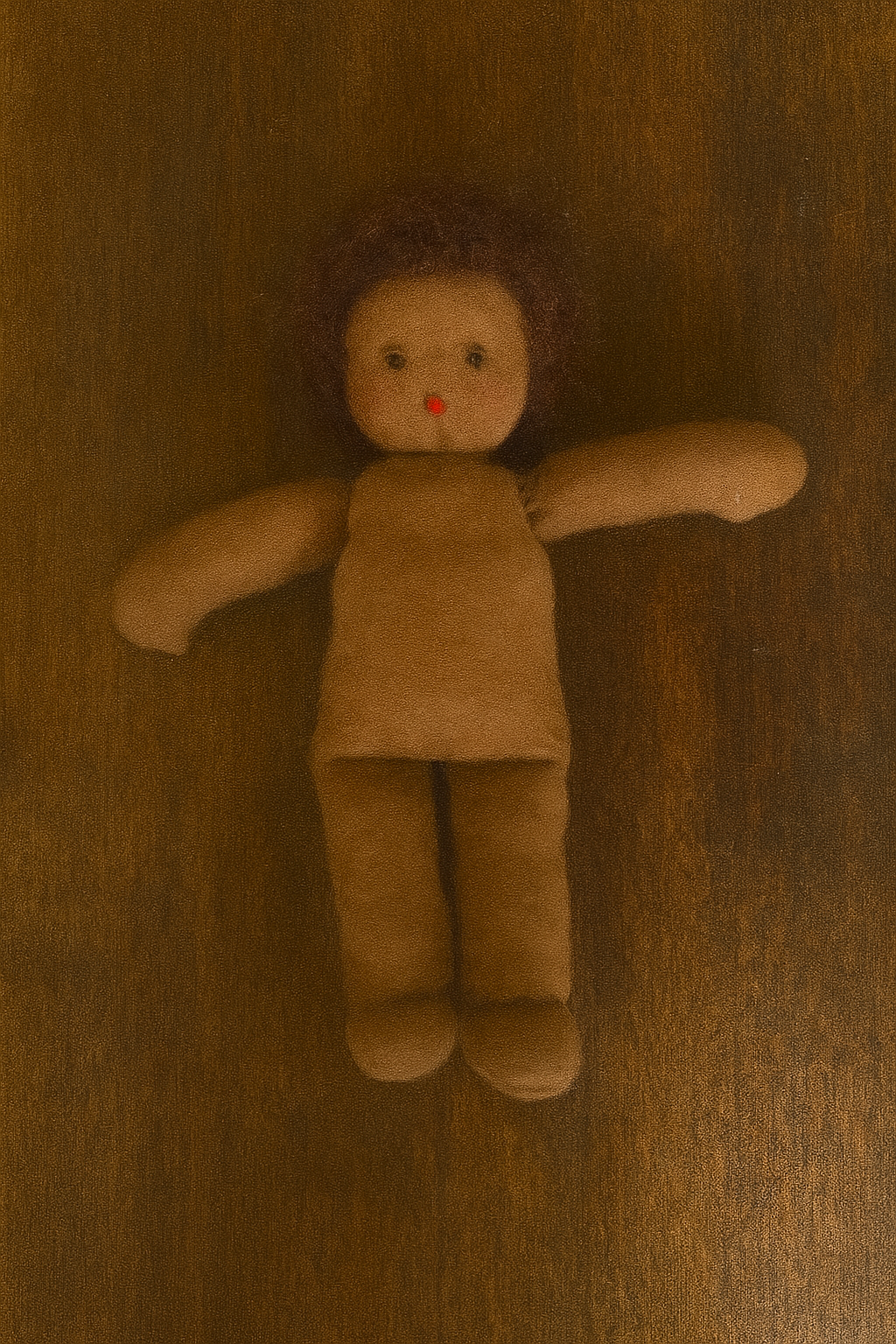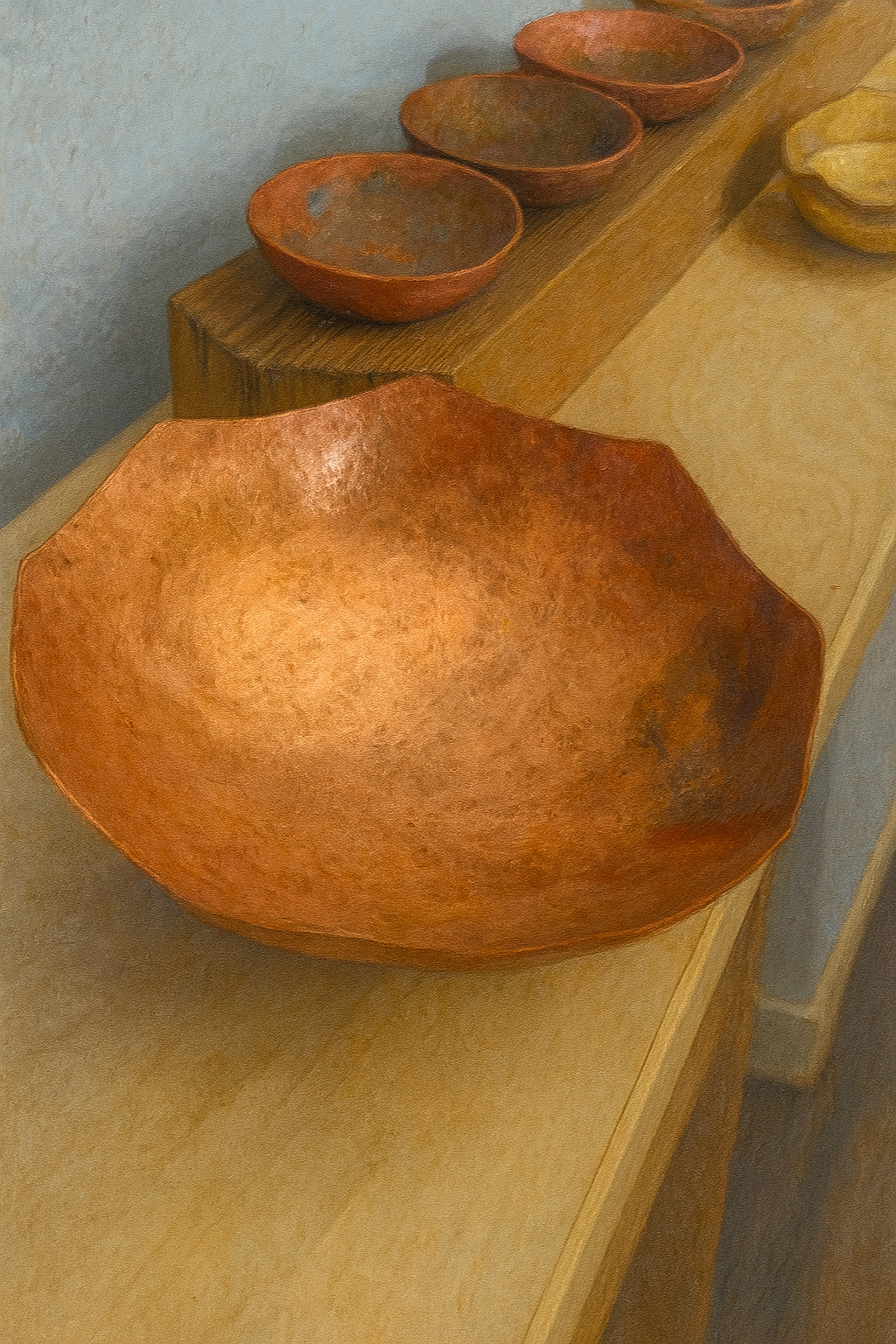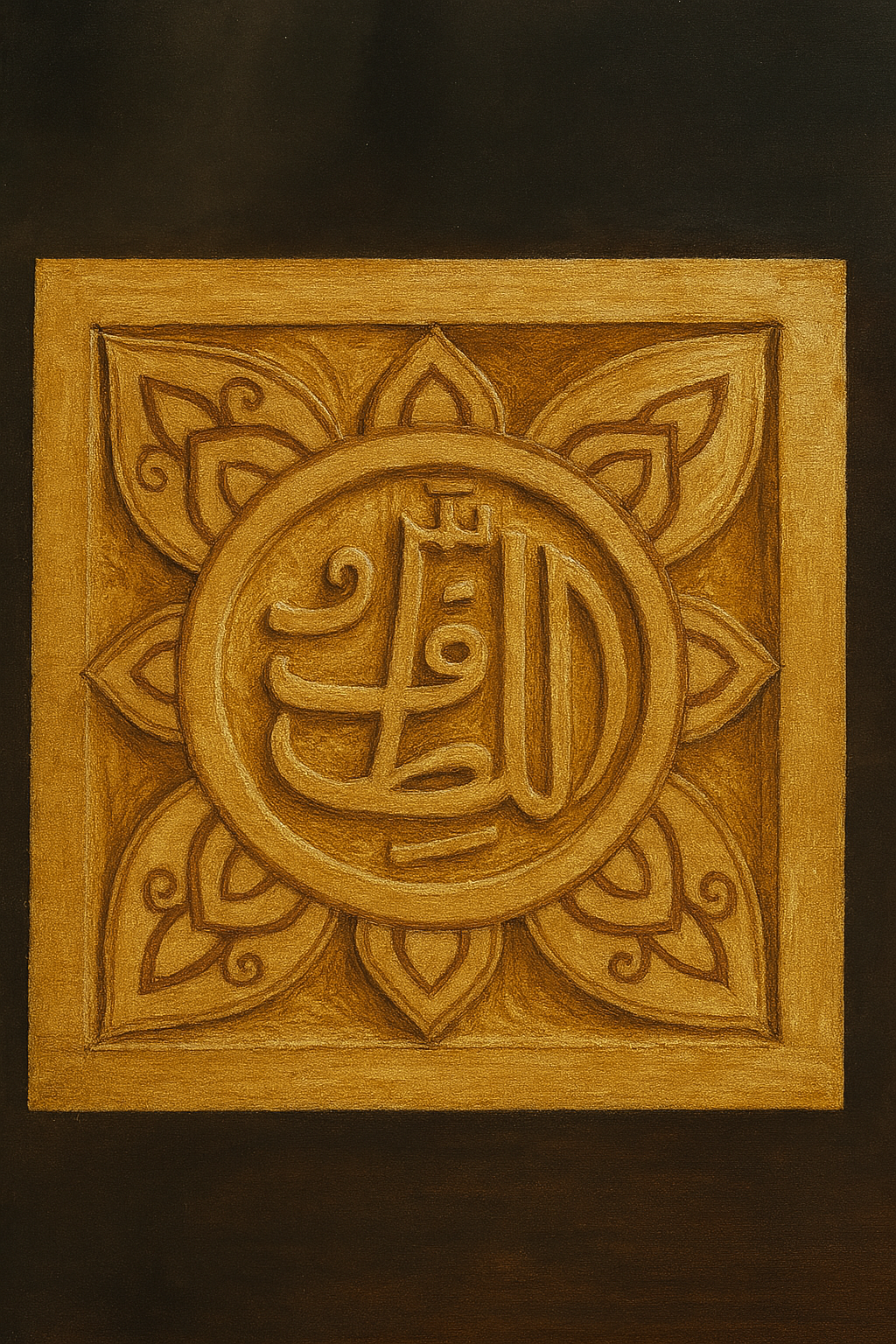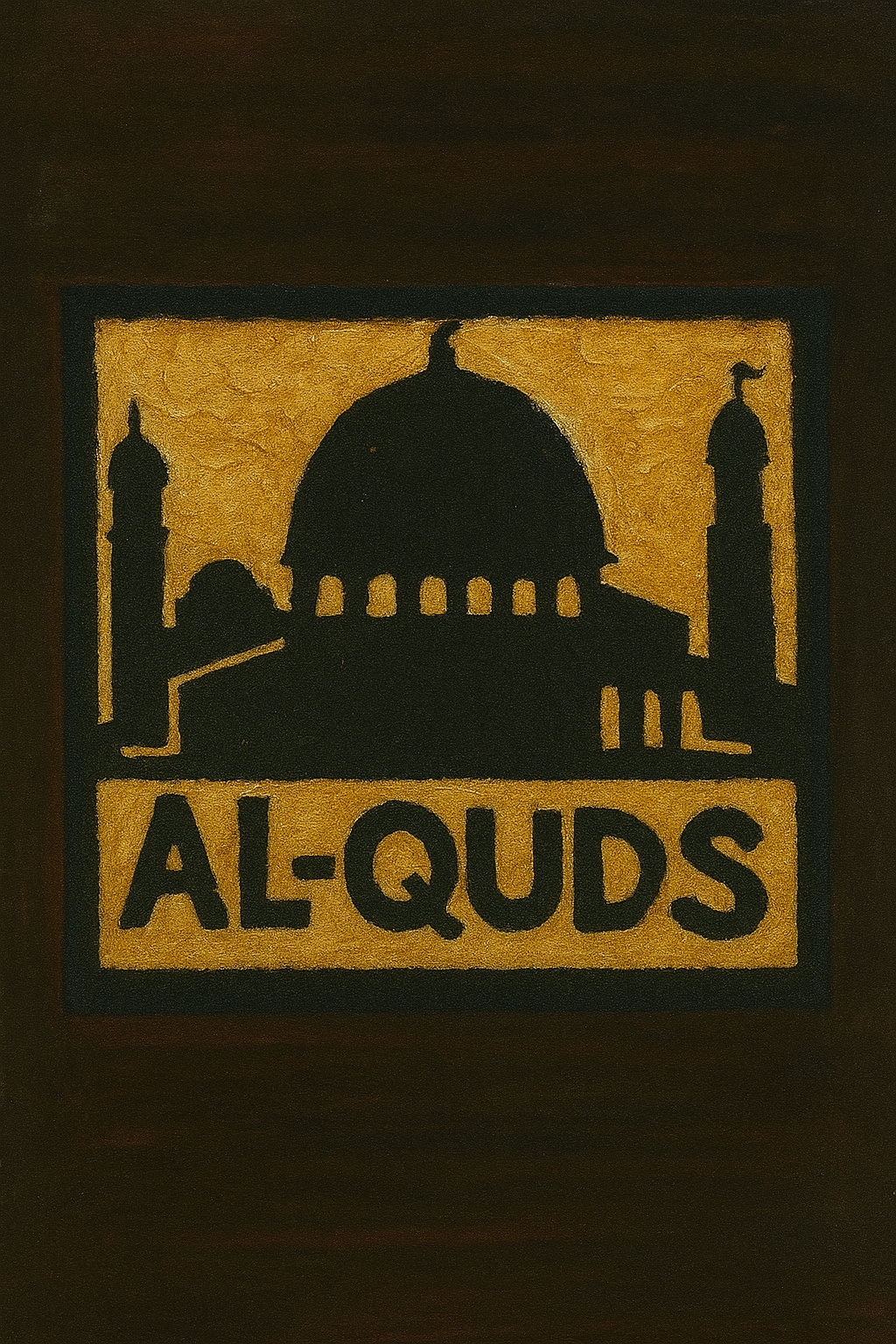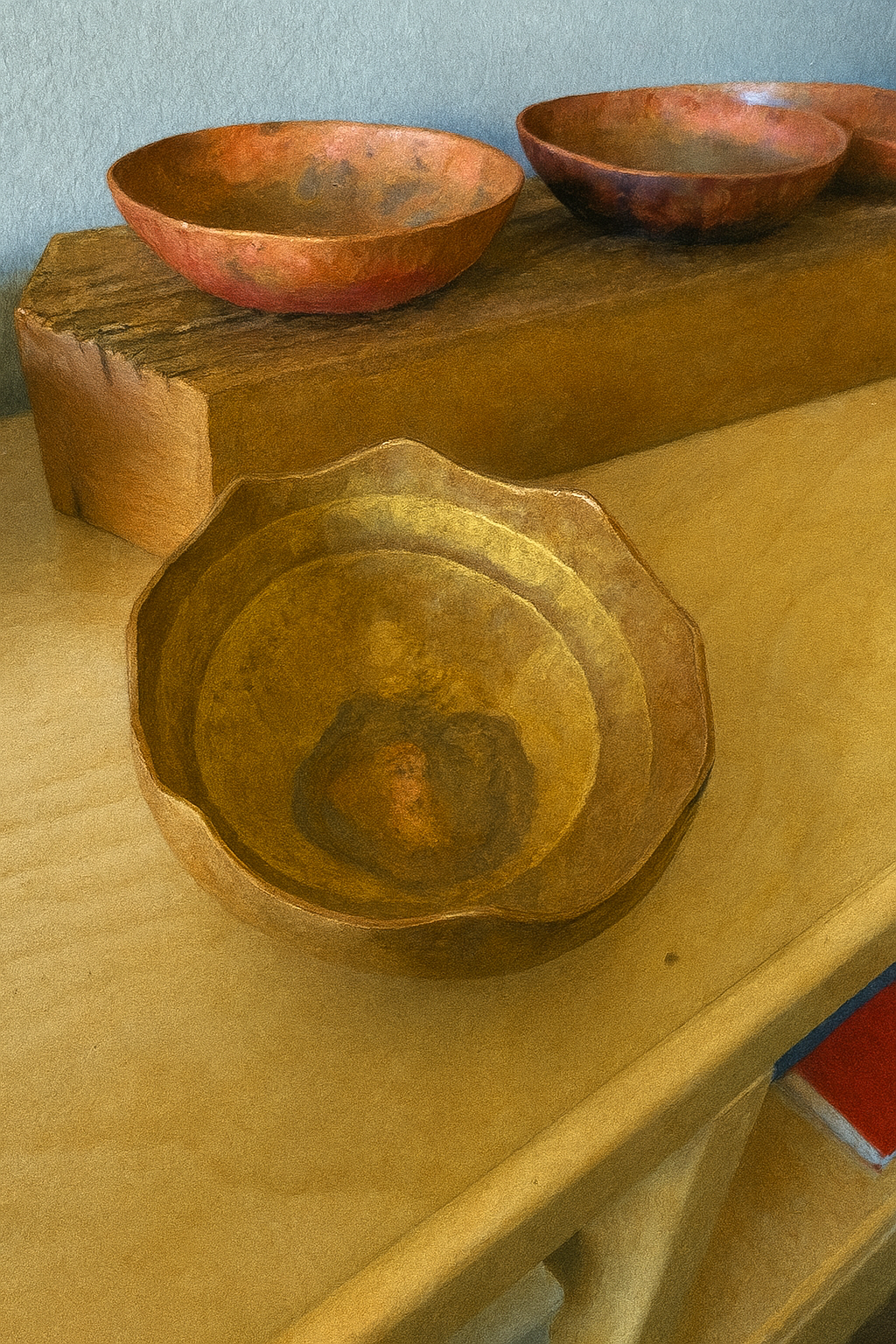Handwork Projects| Grade 1
Handwork Projects | Grade 2
Handwork Projects | Grade 3
-
Beginning Weaving
Weaving is a skill 3rd graders learn in conjunction with their Shelters Block. Learning the basic skills of shelter building, making clothes and farming ease the Grade 3 student as they go through the 9-Year Change.
-

Circle Weaving
Circle Weaving is another simple weaving project that supports the Grade 3 student in their endeavor to master the basic skills for the necessities of life without machines. Learning these skills by hand brings comfort to the child experiencing the 9-Year Change.
-
Weaving on a Loom
Weaving on a loom is a beautiful way to connect to the artisans of the past. Weaving is a skill and an art that dates back as far as civilization. You may weave without a loom, but if you have one, it’s important to give it a try. Be sure to name the parts of a loom: frame, warp, weft, pegs, shuttle and comb.
-

How to Weave on a Loom
With a little effort, you can turn your weaving project into a bag. While I recommend using a small template, you can do a larger one as we did. However, a larger weaved bag in this style is not as spacious or sturdy as you’d like and it takes hours and hours to weave.
Handwork Projects | Grade 4
Handwork Projects | Grade 5
-
Knitting with 4 Needles
In grade 5, students begin working with 5 knitting needles to knit in the round. They work on hats and socks and may even complete the set with gloves and a scarf. To begin the year, students are likely to make their own knitting needles using hardwood dowels as they did in grade 1. This time around, they make the needles double pointed.
-

How to Knit a Scarf
Once you learn to knit, you can easily make a scarf. The only thing is that it takes a long time! For that reason, I offer this project when the students are older and can handle the perseverance needed to complete this project. It’s a great project for the students who get through their knitted hats quickly.
-
Knitted Beanie Hats
In this slow tutorial, I walk you through the basics of knitting so you can knit a hat or beanie for a peg doll. I have three patterns to share with you inspired by the pattern in the book Making Peg Dolls by Margaret Bloom on the Martinmas peg doll tutorial.
Handwork Projects | Grade 6
Handwork Projects | Grade 7
-

Doll Making
In Waldorf education, doll making is a soulful, hands-on process that nurtures the child’s creativity and deepens their connection to the human form. Students typically create soft, simple cloth dolls using natural fibers, often learning to stuff, sew, and shape the dolls by hand. This work fosters fine motor skills, patience, and imaginative play, while also offering a meaningful experience of nurturing care.
-

Shibori
Shibori is a traditional Japanese dyeing technique that involves folding, twisting, or binding fabric before submerging it in indigo dye to create intricate patterns. In a Waldorf setting, students explore Shibori as a meditative and artistic process that connects them to cultural traditions and the natural world. The hands-on, rhythmic folding and binding work beautifully with Waldorf’s emphasis on form, rhythm, and natural materials.
-
Sashiko
Sashiko is a form of Japanese functional embroidery that uses running stitches to reinforce or decorate fabric, traditionally with white thread on indigo cloth. In Waldorf handwork, Sashiko is introduced as a mindful, repetitive stitching practice that enhances both beauty and utility. Students develop rhythm, precision, and an appreciation for craftsmanship while honoring textile traditions that value repair, sustainability, and beauty in the everyday.
Handwork Projects | Grade 8
-

Log Cabin Quilt
In Grade 8 Waldorf handwork, students may explore the traditional log cabin quilt as a culminating textile project that incorporates geometry, symmetry, and careful craftsmanship. This quilt block pattern, built outward from a central square, encourages spatial awareness, color harmony, and rhythm in design—key aspects of adolescent developmental needs. Through piecing, stitching, and assembling the quilt, students experience a sense of purpose, patience, and pride in creating something both beautiful and functional.
-
Doll Making
In Waldorf education, doll making is a soulful, hands-on process that nurtures the child’s creativity and deepens their connection to the human form. Students typically create soft, simple cloth dolls using natural fibers, often learning to stuff, sew, and shape the dolls by hand. This work fosters fine motor skills, patience, and imaginative play, while also offering a meaningful experience of nurturing care.
-
Knitted Hat
In grade 5, students begin working with 5 knitting needles to knit in the round. They work on hats and socks and may even complete the set with gloves and a scarf. To begin the year, students are likely to make their own knitting needles using hardwood dowels as they did in grade 1. This time around, they make the needles double pointed.
Waldorf Practical Arts Projects | Grades 9-12
